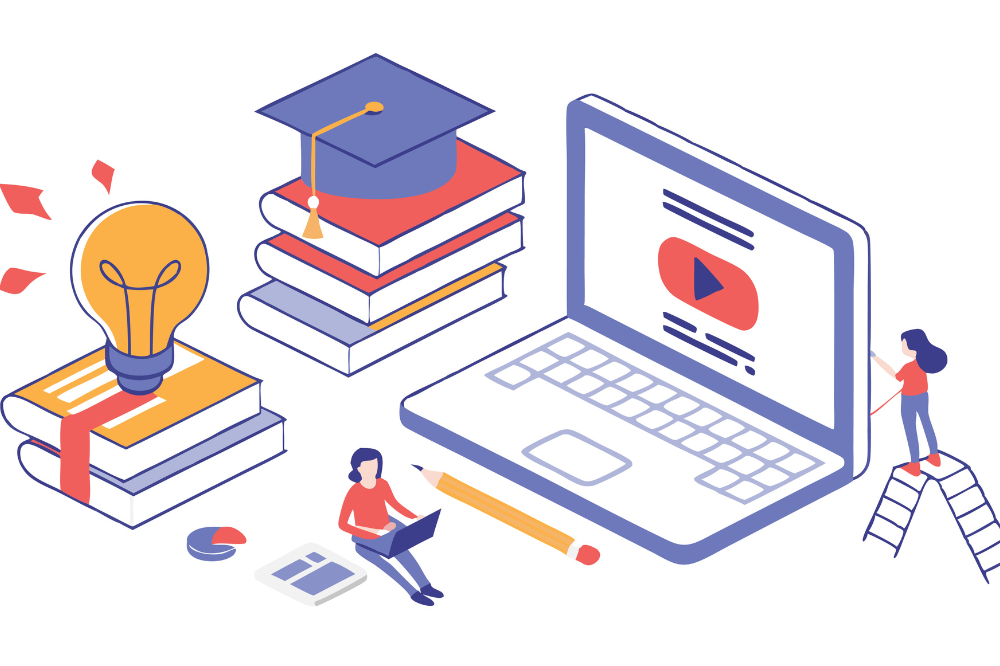
AI has the potential to revolutionise teachers’ work and how students at all levels learn.
It is in education apps such as Duolingo, Quizlet, SeeSaw, and Socratic.
AI in apps uses algorithms to shape the learner’s journey, personalising it throughout to sustain engagement. Algorithms are also used to trigger branching. This means different pathways for learners are offered, based on learner responses to activities.
For teachers, AI-literacy development is essential because their knowledge and skills can determine successful use of AI in promoting student learning.
Developing teachers’ AI-literacy
With human-centredness as its starting point, UNESCO views AI-literacy as foundational. AI-literacy includes:
- understanding what AI is, how models are trained, data, and algorithms;
- using ethical principles to think critically about AI and AI-human interaction;
- knowing the benefits and risks of AI in education;
- using AI to plan lessons, teach, and assess students; and
- having professional development to hone these skills.
Ethical use entails enacting Australia’s AI ethical principles and generative AI framework. Student privacy and data security should be top shelf concerns for schools, which will require school staff to be alert to breaches as they apply Australia’s AI guardrails.
Of all the priorities in the guardrails, the centrepiece must be human-centred AI deployment in schooling.
AI-Pedagogy
AI-literacy connects with what we call AI-Pedagogy, which involves:
- engaging ethically with AI;
- finding AI that is easy to use, age appropriate, and aligned with curriculum;
- arousing students’ interests;
- promoting individual and collaborative work, thinking analytically and critically, and being creative;
- tailoring learning for individual students; and
- modelling creating with AI in critical, ethical, and original ways
AI can offer teachers opportunities to personalise learning via Extended Reality, intelligent tutoring systems, and formative assessment apps, for instance.
Teachers can model framing prompts that elicit relevant information. They can model critically engaging with the response through checking the AI’s sources, questioning the information, and comparing it to information from other sources.
Using assessment criteria, teachers might model using prompts to aid adapting and creating new pieces, discussing their processes and creations, assisting students to evaluate their own work.
Assessment is essential for teachers to differentiate learning experiences. It provides feedback on students’ progress, helping teachers decide what they teach next.
Authentic tasks that boost all students’ knowledge and skills to engage with AI in ethical, critical, and creative ways provide this feedback.
Immersive Assessment, where students complete tasks using and are assessed with AI, is one example.
To facilitate such assessment, teachers look at whether an AI tool:
- provides students with timely and effective feedback on their work;
- offers the ability to ask questions of students;
- involves peers in questioning and providing feedback.
- provides opportunities to further students’ learning goals; and
- enables student agency.
The potential for innovation
AI-literate teachers are data literate teachers. They identify the data they want to collect, know how to collect that data, and how to analyse it. Data literate teachers apply their findings to their classroom.
Collecting and compiling students’ results over the course of teaching can help teachers track student learning over time, identifying students’ growth and determining what to teach next.
Teachers could add NAPLAN results, other assessment outcomes, and intervention outcomes to this data picture ― contributing to what we call Individual Digital Learning Histories for every student.
Teachers can share this History with students through dashboards and similar visualisation tools integrated with their school’s Learning Management System, aiding students to choose goals for their learning.
Can AI improve learning?
For AI to help schools be better, teachers need to be AI-literate, engaging with AI in human-first, ethical, knowledgeable, and imaginative ways to plan lessons, teach, and assess their students.
They need to be data literate, taking advantage of AI tools to monitor student learning over time to better see what they need to teach next.
Beyond this, teachers can share valuable learning data through longitudinal monitoring and Individual Digital Learning Histories.
Teachers can use AI to improve education, but only when they are AI-literate and human-centredness remains fundamental to schooling.
This op-ed was authored by Professor Claire Wyatt-Smith, of Wyatt-Smith Education Solutions and Dr Megan Kimber of Australian Catholic University’s Institute for Learning Sciences and Teacher Education.

